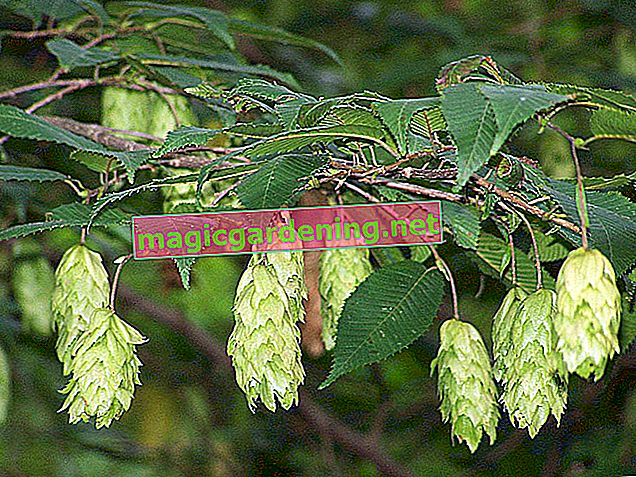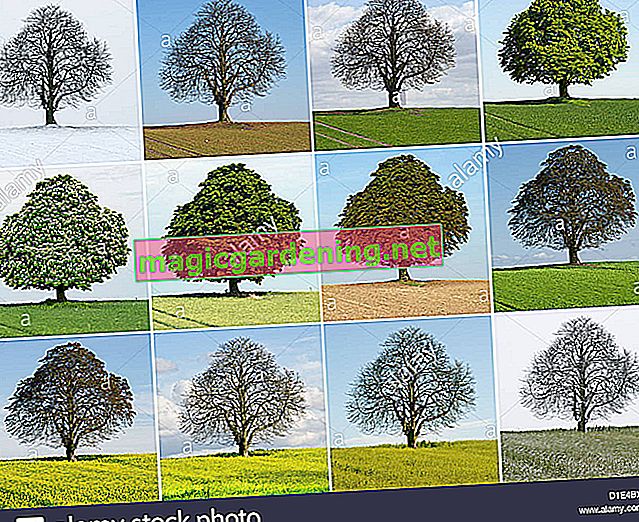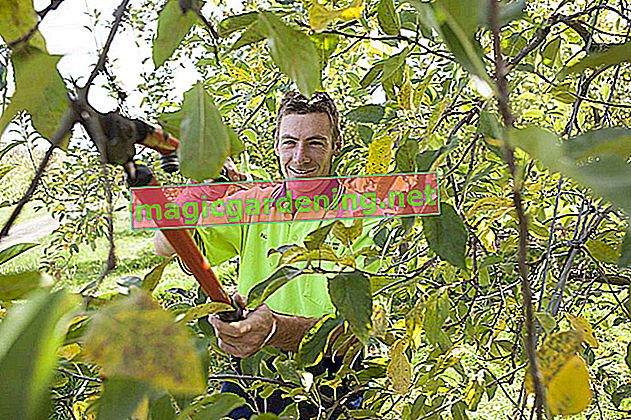
Structure of the fruits
The fruit of the hornbeam consists of a small nut about one centimeter long, which is enclosed by a three-winged leaf. The initially green leaf provides the nut with nutrients.
also read
- Interesting facts about the hornbeam leaf
- When is the hornbeam's heyday?
- How big is the hornbeam growth per year?
As soon as the fruit is ripe, the wrapper turns brown and dries up.
When are the hornbeam fruits ripe?
The seeds of the hornbeam ripen in September and October. They are blown off the tree by the wind. The cover sheet acts like a propeller that blows the nut up to a kilometer away.
In its new location, it remains in the soil for up to two years until it germinates. The fruits are sprout inhibited and only open if they have survived a longer period of frost.
Propagate hornbeams from nuts yourself
If you want to propagate hornbeam yourself, you can try sowing new trees from the fruits of the tree.
To do this, you need the seeds that you can find in the forest or on the fields. If you are already growing a hornbeam in the garden, you can also harvest nuts here.
In order to overcome the germ inhibition, you have to provide for a cold spell. Put the nuts in a dark container in the refrigerator for a couple of weeks or sow them on the spot.
Sow hornbeam
When sowing outdoors, you must bear in mind that many animals like to harvest hornbeam fruits. There is a risk that squirrels and mice will eat the nuts. Therefore, sow the fruits in small pots that you set up in a shady place.
- Prepare small pots with garden soil
- Do not place seeds too deep
- Place the pot in the shade
- keep soil moistured
- Cover with leaves or straw if necessary.
It takes up to two years for the seed to germinate and for a new hornbeam to start growing.
Frequent cutting prevents the fruit from ripening
If the hornbeam is grown in the hedge, you will usually wait in vain for blossoms and later fruits. Frequent pruning in spring and summer removes the buds.
The hornbeam nut is not poisonous
While unroasted beechnuts can cause slight symptoms of poisoning when consumed, the fruits of the hornbeam are even edible.
Hornbeam fruits do not pose any danger to animals, especially horses. The trees are therefore very suitable as plants for pastures.
Tips
Hornbeams are monoecious, which means that male and female flowers grow on the tree. The female flower is inconspicuous. The male flower, on the other hand, is very noticeable because it has the shape of a kitten.








